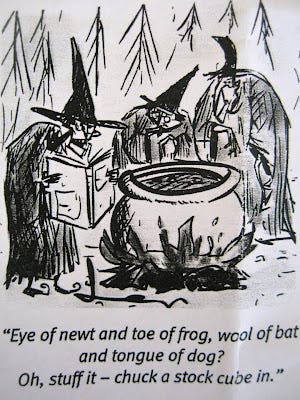Paul Cézanne - Still life with apples.
Samhain
This is faery time
when old men and old dogs seek a warm hearth.
The shifting seasons dislocate space,
and time in its endless spool halts and thins.
Voices from the future and the past
call like foxes under an icy moon.
Round the Samhain fire
silhouetted against smoke and needled by frost
we step through the gate of the year
into the dark time.
Yet in that dim deep silence
where leaves rot and summer wastes away
the seed stirs in man, in beast and in the earth
and in that death is life - and from decay springs birth.
Liz Woods
The three days from 31 October to 2 November are associated in both Pagan and Christian mythologies with the remembrance of the dead and the spirit world they supposedly inhabit. These days the shops are full of tat that reminds us that All Saints Day is shortly to be upon us, followed immediately by All Souls Day on the 2nd November. In the far west of Cornwall the nearest Saturday to Halloween was celebrated as Allantide. This is what the Cornish folklorist Margaret Courtney had to say about Allantide.
'The shops in Penzance would display Allan apples, which were highly polished large apples. On the day itself, these apples were given as gifts to each member of the family as a token of good luck. Older girls would place these apples under their pillows and hope to dream of the person whom they would one day marry. A local game is also recorded where two pieces of wood were nailed together in the shape of a cross. It was then suspended with four candles on each outcrop of the cross shape. Allan apples would then be suspended under the cross. The goal of the game was to catch the apples in your mouth, with hot wax being the penalty for slowness or inaccuracy'.
M. A. Courtney ‘Cornish Feasts and Folklore’ (1890)
Ron Hutton in ‘Stations of the Sun – A History of the Ritual Year in Britain’ is convinced that in pre-Christian times as the pastoral year came to an end, there was a festival to mark this turning point - it might even have been celebrated as the pre-christian new year. Samhain bookends the celebration of Beltane in May, unfortunately the evidence for Samhain is rather more sketchy than its spring partner.
However there is definitely a numinous undertone of darkness at this time of year. The summer has ended and harvest is over. The byres may be full, but the dark months are ahead. For the Anglo Saxons, November was ‘blod-monath - blood month’ the traditional month for the slaughter of animals. Leaves too are falling – death is literally in the air.
Another Samhain clue is to do with the lighting of ‘jack o' lanterns’. Long before the US adopted the habit of celebrating Halloween with pumpkin lanterns, such lanterns were made in Scotland out of large swedes and were called ‘samhnag.’ The lights inside were lit to ward off evil spirits because it was believed this is the time when the membrane between the physical world and the spirit world becomes porous.
There are also long established Celtic traditions of dressing up as malevolent spirits. In earlier times this involved young men painting their faces black or white and making mischief in the streets – the origin of ‘trick or treating’, indeed when I was growing up in Yorkshire, Halloween was still called ‘Mischief Night’.
So something with Cornish apples for Allantide. Here’s a really scrummy apple cake. If you peel the apple, throw the peel over your shoulder and it will form the initial of the man you will marry. Don’t do this if you are already married – it may form the wrong letter.....
I have a small loose bottomed cake tin - I guess about 6” across and it’s very useful for making a small cake. When there are only two of you, a family sized cake goes on too long, or gets chucked or frozen and forgotten.
This was really easy - it’s a pound cake recipe - or rather a quarter pound cake recipe.
2 eggs, 4oz sugar, 4oz self raising flour, 4 oz melted butter, half an eating apple peeled and chopped small, a dab of vanilla paste.
Whisk the eggs and the sugar until white and frothy, add the vanilla, then whisk in the cool melted butter and fold in the flour. Put into the lined cake tin and drop the cubes apples on top - they sink but not too much.
Bake at 175c in a fan oven for 40 mins.
The icing is a paste made of icing sugar, single cream and ¼ tsp cinnamon. I sprinkled with chopped walnuts. It was good - and gone in a flash.
'Meg fain wad to the barn hae gaen,
To win three wechts o' naething;
But for to meet the deil her lane,
She pat but little faith in:
She gies the herd a pickle nits,
And two red-cheekit apples,
To watch, while for the barn she sets,
In hopes to see Tam Kipples
That very nicht.'
From 'Halloween by' Robert Burns (1759-1796)






